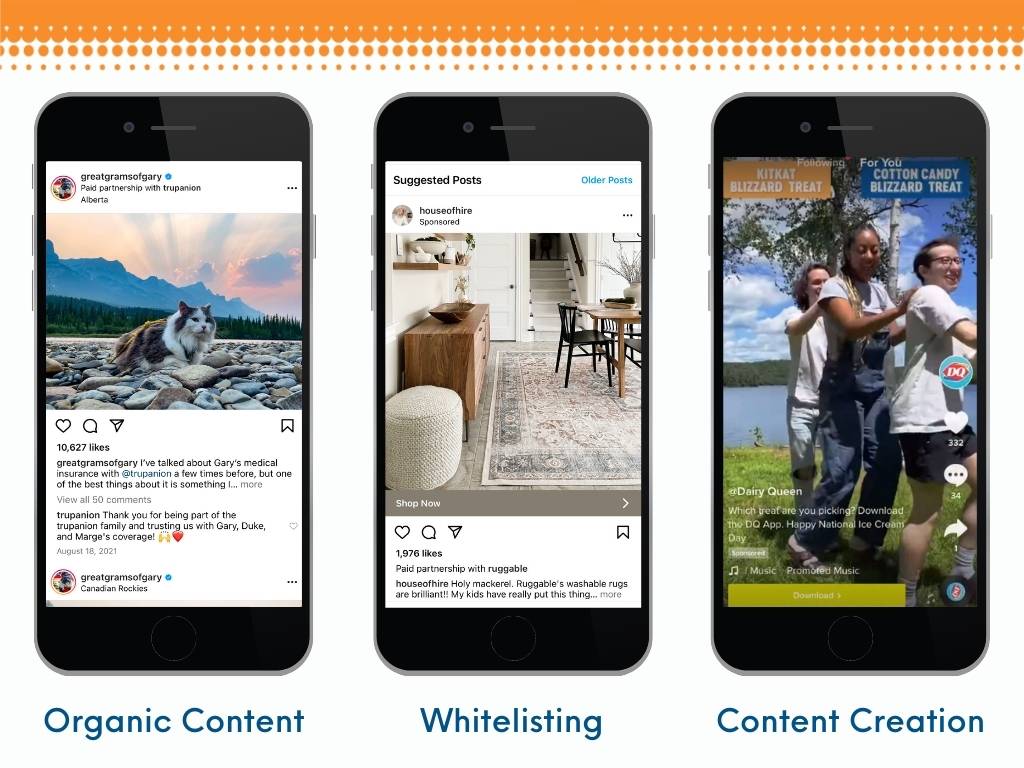What is Influencer Marketing? – 3 Ways to Incorporate it into Your Marketing Strategy
It’s no secret that the pandemic has changed many facets of our everyday lives. One notable change has been the increase in time spent on social media platforms as a result of worldwide lockdowns. The increase in time spent was coupled with a shift in more people actively participating in the platforms by creating content and engaging with their community, rather than being silent scrollers. With this change in user behaviour, the creator economy saw significant growth. Over the last two years alone, the market size of influencer marketing grew by 122% and is projected to grow to $15 Billion in 2022.
If you’re not quite sure where to start when building your influencer marketing strategy, let me show you three different ways to incorporate it into your campaigns:

1. Organic Content
TL:DR – Influencers promote your brand on their own social channels
This is likely what you first think about when you think of influencer marketing as it dates back to the earlier days of social media when celebrities and public figures were the primary influencers. To put it simply, you as the brand provide an influencer with your product or invite them to experience your service and they post about it on their own social channel(s). This option has become much more accessible to brands of all industries and sizes in recent years as the influencer landscape has evolved. Influencers can now be classified as Nano influencers all the way up to Mega influencers:
- Nano influencers: Less than 10k followers
- Micro influencers: 10k to 50k followers
- Mid-tier influencers: 50k to 100k followers
- Macro influencers: 100k to 1M followers
- Mega influencers: Over 1M followers
Generally speaking, Nano and Micro influencers are likely the best fit for regional, niche or budget-conscious brands. That being said, follower count should be less of a focus when putting together your influencer roster. Instead, focus on engagement rates, the audience to product/service fit, and reach within your target geography. Authenticity is really the key to success when influencers are posting on their own accounts. Not only will results fall short if the influencer’s audience doesn’t relate to your brand, it’s also more likely that the sentiment around your brand skews more negative if influencer quantity over quality is prioritized.
2. Whitelisting
TL:DR – Amplify the reach of your influencer content through paid social
Whitelisting is an important but often forgotten about tactic in influencer marketing. The challenge with doing only organic content as highlighted above is no matter how well your influencer audience fits with your brand or how great an influencer’s average reach is, the reality of social media is that not every post someone puts out there will deliver expected reach because of a little thing called ✨the algorithm ✨. That’s where whitelisting comes in.
To ensure the organic content gets the reach it deserves, you can run the organic content as branded content in your paid ads campaigns and control targeting and reach. The ads will show in social platforms in their original form, the only difference being the added ‘sponsored’ label. This tactic is also great for local or regional brands where it might be challenging to build a roster of influencers whose audience is also primarily located in your target location.
3. Content Creation
TL:DR – Partner with content creators to develop your ad creative or other digital assets
The third way to incorporate influencer marketing into your marketing strategy is to tap into influencers to develop creative assets to be used in your paid campaigns, organic social, or other owned digital content. This is especially helpful when trying to break into emerging channels like TikTok or Instagram Reels, where you might not have the in-house capabilities yet to develop channel-specific content. Follower count and audience fit isn’t a focus in this scenario as the content creators will only be producing the content on your behalf. It’s also a great opportunity to partner with emerging local content creators who produce really high-quality content at an affordable rate.
Convinced that influencer marketing should be added to your marketing strategy? Or want to learn more? Drop us a line, we’d love to chat through the opportunities specific to your brand!